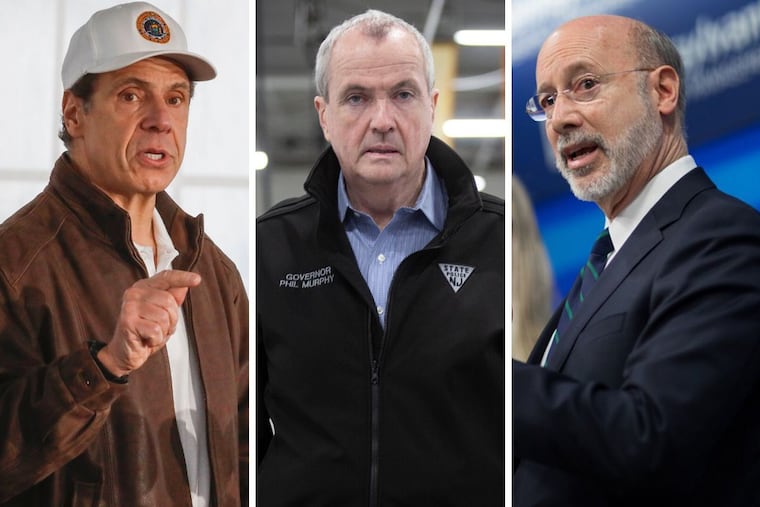During coronavirus pandemic, governors’ leadership is critical | Editorial
Governors are more than a reliable and soothing presence — they are America's crisis managers.

Monday night, shortly after President Donald Trump used the White House coronavirus briefing to berate the media and insist that he has total authority by virtue of his office to open the economy (he doesn’t), Gov. Tom Wolf addressed Pennsylvanians in a video that was notable for its balance of hard truths and compassion.
The contrast is a striking reminder that the leadership gap in the White House’s response to the pandemic has been filled, with a few exceptions, by governors.
Before Trump’s briefing, governors on both coasts announced something the White House has been unable to do: work together — California, Oregon, and Washington on the West Coast, and Pennsylvania and six other states on the East Coast — to create plans for reopening their economies when the time is right. They will be guided by data and experts.
The regional pacts are another reassuring example of governors stepping into the leadership void that is left by the White House. Governors all over the country have had to make tough decisions and communicate information, including bad news.
Epitomizing the latter role is New York Gov. Andrew Cuomo, who has become a national figure due to the contrast in his poise and demeanor during New York’s daily briefings with Trump’s. But New Jersey Gov. Phil Murphy and Pennsylvania Gov. Wolf have also exhibited impressive fortitude — each with their own style. Murphy patiently answered questions on radio and shared data graphics on Twitter, and Wolf took early action, but mostly let Health Secretary Rachel Levine be the main communicator.
Even with a functioning White House, it is likely that governors would have had a critical role at this moment. Governors are crisis managers.
According to Bill Harder, a scholar of governors at American University, in times of crisis, power tends to flow into the hands of governors simply because they are executives with expansive powers who are also closest to citizens. Gov. Murphy has signed 23 executive orders in about a month — likely setting a record.
Governors in the region have responded to the crisis differently. Murphy, for example, was one of the few governors who had the foresight to establish a coronavirus task force back in February — when there were only eight COVID-19 cases in the country. It took 10 days following the first case in Pennsylvania for Wolf to close schools statewide, while Cuomo waited 18 days. Similarly, Pennsylvania closed all businesses statewide 12 days after its first case, New Jersey 17 days after its first case, and New York 22 days after.
In all three states, the list of essential businesses has changed over time, raising questions about transparency. The waiver process for businesses that all states have has come under scrutiny in Pennsylvania.
It will take time to evaluate how much Gov. Wolf’s overall actions contributed to Pennsylvania’s infection rate being less than a fifth of New York’s and less than a third of New Jersey’s. There are many other factors to consider. But we can take comfort from the fact that swift and decisive action matters and our regional governors are taking it.
» HELP US REPORT: Are you a health-care worker, medical provider, government worker, patient, frontline worker, or other expert? We want to hear from you.